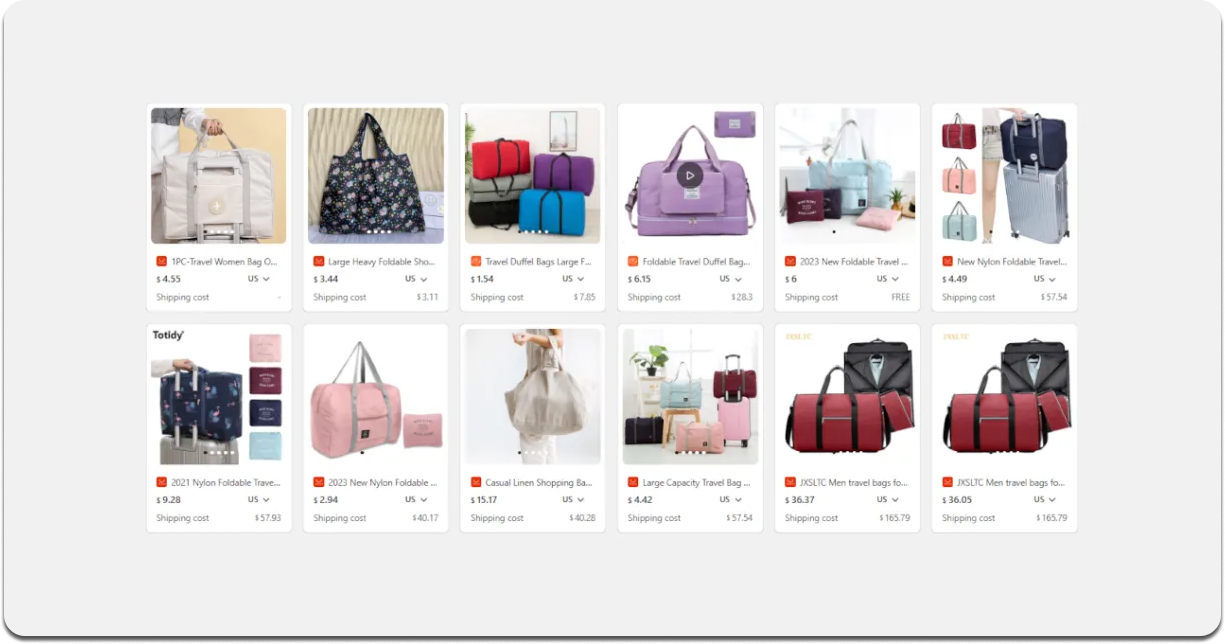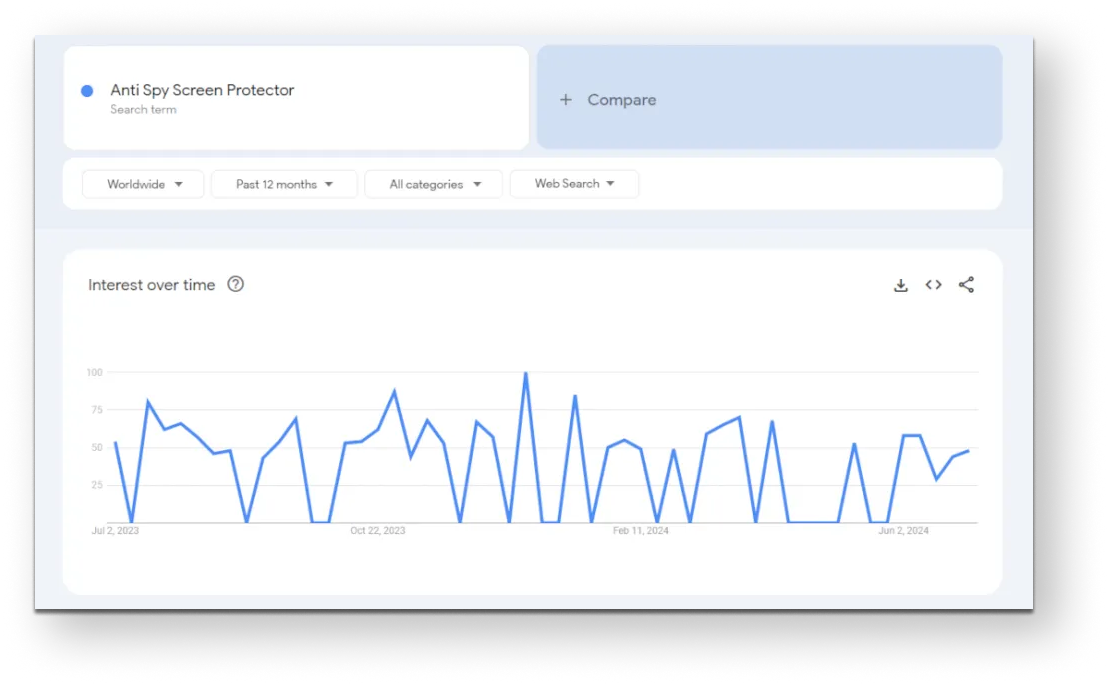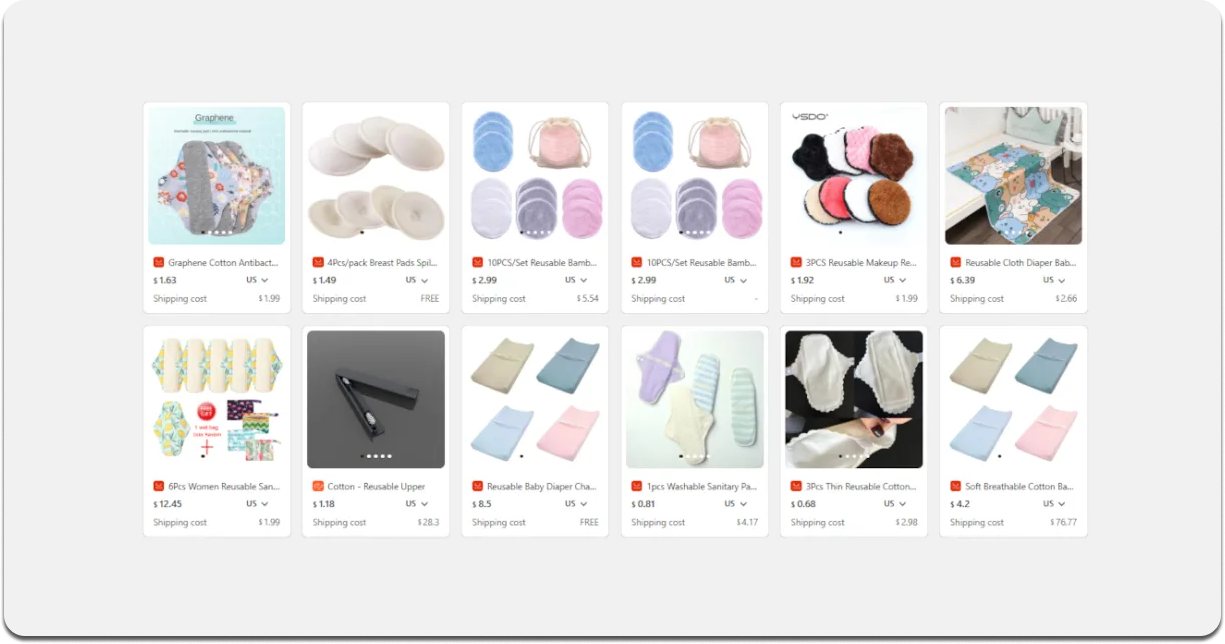Dropshipping is a rapidly growing $226 billion-dollar industry that is constantly evolving. The popularity of trending products shifts frequently due to consumer preferences, technological advancements, and seasonal demands.
Using the ZOPI app, we have analyzed product orders and identified key categories and products likely to go viral in 2025 and beyond.

Top Dropshipping Categories and Products for 2025
Home & Garden
Google Trends indicates a steady increase in searches for products like modular furniture, energy-efficient LED lighting, and garden organizers. As more consumers turn to online shopping for home and garden needs, dropshippers can capitalize on this expanding market.


According to ZOPI’s data, top-performing items include:
- Solar garden lights: Cost-effective and visually appealing, catering to eco-conscious consumers.
- Self-watering planters: Ideal for urban gardeners and busy households seeking low-maintenance gardening solutions.
- Compact storage solutions: Perfect for maximizing space in homes.
Luggage & Bags
The shift to hybrid work models has increased the demand for functional backpacks and compact travel accessories. Features like lightweight materials, anti-theft zippers, and USB charging ports enhance their utility, ensuring consistent profits as long as the products remain unique.
For instance, foldable travel bags appeal to minimalists and frequent travelers due to their space-saving and versatile design, making them ideal for carry-on essentials.

Phones & Accessories
Dropshipping phone cases and accessories presents a lucrative opportunity, with the market for phone cases expected to grow to over $29.764 billion in 2024, with a CAGR of 6.3% over the next five years.
This growth reflects the rising popularity of phone cases, driven by trends such as:
- Customization: Consumers seek unique designs that reflect their personal style.
- Eco-friendly materials: Sustainable options are increasingly in demand.
- Multifunctional designs: Cases with cardholders or stands are gaining traction.

Phone accessories like anti-spy screen protectors and heavy-duty cases are also seeing increased global search interest. These products can yield profit margins of up to 60%, making them excellent additions to your store.
As privacy concerns grow, the demand for anti-spy screen protectors has surged, with searches for “privacy screen protector” spiking globally.

With consistent demand and emerging trends, dropshippers can effectively tap into this lucrative segment by offering competitive pricing and unique value propositions.
Beauty & Health
The wellness and skincare sectors remain evergreen niches. The global health and wellness market is projected to grow from $5.5 trillion in 2023 to $9.4 trillion by 2033. High-demand products include:
- Reusable makeup pads: Sustainable and cost-effective, appealing to eco-conscious consumers.
- LED facial masks: Popular among self-care enthusiasts seeking spa-like treatments at home.
- Organic skincare kits: Aligning with the growing trend towards natural beauty products.

The Beauty and Health category consistently performs well in dropshipping due to its universal appeal and recurring demand. However, strict regulations regarding ingredients and certifications necessitate compliance and partnerships with reputable suppliers to maintain customer trust.
Jewelry & Accessories
Personalized and minimalist designs are trending. The rise of lab-grown diamonds and eco-conscious materials is driving innovation in this space. Popular items include:
- Initial pendants: A personal touch that resonates with consumers.
- Zodiac-themed jewelry: Tapping into astrological trends.
- Hypoallergenic earrings: Catering to sensitive skin and health-conscious buyers.

The jewelry and accessories category is a thriving and versatile niche in dropshipping, appealing to a broad audience with diverse tastes and budgets. Its high perceived value and ability to reflect personal style make it suitable for gifting occasions.
Common Dropshipping Challenges and Solutions
While dropshipping offers a low-risk entry into e-commerce, it comes with its own set of challenges. Here’s a look at common issues faced by dropshippers, especially beginners, along with actionable solutions.
Slow Shipping Times
Long delivery times can frustrate customers and increase cart abandonment rates. Many dropshippers source products from overseas suppliers, particularly in regions like China, where logistical complexities and customs delays can lead to extended delivery times, ultimately affecting customer loyalty.
Solution:
- Work with local suppliers: Prioritize suppliers with warehouses closer to your target market.
- Set clear expectations: Communicate estimated delivery times during checkout and in order confirmations.
High Competition
The low entry barrier of dropshipping can lead to overcrowded niches, making it challenging to succeed.
Solution:
- Focus on niche markets: Carve out a niche or focus on unique branding. For example, instead of generic beauty products, consider vegan or organic items.
- Offer a unique value proposition: Provide exceptional customer service, eco-friendly packaging, or exclusive designs.
Low Profit Margins
Dropshipping often has slim margins due to shipping fees, supplier costs, and price wars.
Solution:
- Upselling and cross-selling: Bundle products and upsell to increase order value. Small markups can make it hard to stay profitable, so consider bundling products or upselling accessories.
- Reduce costs: Negotiate better rates with suppliers or streamline ad spending using performance-based campaigns.
Finding Winning Products
Choosing the wrong products can lead to ineffective ad spending.
Solution:
Dropshipping success relies heavily on selling trendy products, but identifying and stocking them in time can be difficult. Use apps to streamline your workflow or Google Trends to find trending products and similar suppliers for better deals. Launch small ad campaigns to gauge demand before scaling up.
>> Learn more about common mistakes in dropshipping.
The Future of Dropshipping into 2026 and Beyond
With the global dropshipping market projected to reach $476 billion by 2026, the industry shows no signs of slowing down. Understanding these trends will help businesses not only survive but thrive in the increasingly competitive landscape.
Automation and AI
AI tools are becoming essential for identifying trends, automating product recommendations, and optimizing pricing strategies. Tools like Google AI and Shopify’s predictive analytics features help merchants anticipate customer needs, reduce cart abandonment, and improve targeting accuracy. Automation tools ensure real-time updates on stock levels and fulfillment, minimizing delays and errors in inventory management.
Sustainability
A Nielsen report indicates that 73% of global consumers are willing to pay more for sustainable products. Dropshipping businesses that offer biodegradable packaging, reusable items (e.g., makeup pads), and energy-efficient goods (e.g., solar garden lights) are well-positioned for success. Brands that showcase eco-labels and certifications will stand out as consumer trust in environmental responsibility grows.
Actionable Tip: Partner with sustainable suppliers and highlight the environmental benefits of your products in marketing campaigns.
Omnichannel Selling
Sellers are diversifying their platforms, with TikTok Shop, Amazon, and mobile apps leading the way. TikTok’s algorithm enhances product discoverability, while CH Play and the iOS App Store are essential for targeting on-the-go consumers. Other social media platforms like Facebook, Instagram, and Pinterest are increasingly integrating e-commerce tools, enabling seamless shopping experiences.
Actionable Tip: Test different channels to identify where your audience engages most, and optimize content for each platform’s unique algorithm.
Personalization
Consumers expect tailored recommendations and personalized marketing messages. AI tools can analyze purchase history, browsing behavior, and demographics to deliver these experiences. Categories like jewelry (e.g., zodiac necklaces) or beauty (e.g., personalized skincare kits) offer customers a way to feel more connected to their purchases.
The future of dropshipping into 2026 is promising but requires adaptation to technological innovations, customer preferences, and global challenges. By embracing sustainability, leveraging automation, and expanding to new platforms, dropshippers can build resilient and profitable businesses. Now is the time to invest in these trends to ensure your store stays ahead of the curve.
Conclusion
The top categories for dropshipping, including home & garden, beauty and health, jewelry and accessories, and phone accessories, present significant potential for entrepreneurs looking to build a profitable business. Each category aligns with consumer trends, such as the growing demand for sustainability, personalization, and innovation. By combining data-driven strategies with innovative solutions, your dropshipping business can achieve sustained growth and profitability.
If you’re enjoying our content, read more details and find similar posts on Shopify Community. Happy dropshipping!
